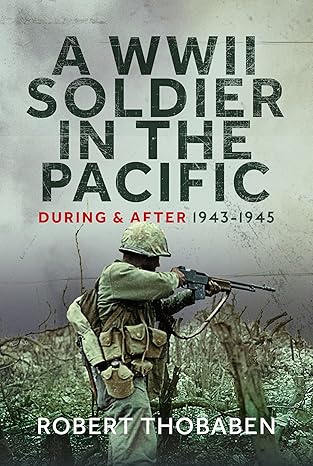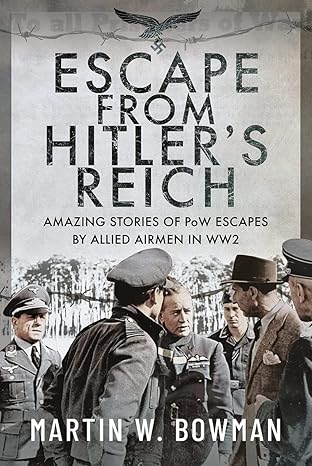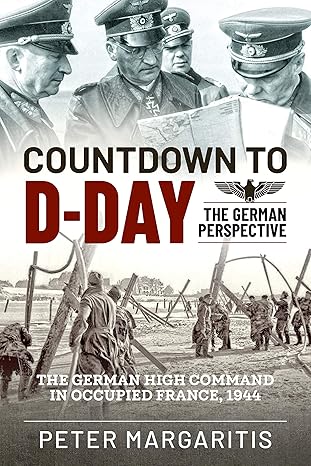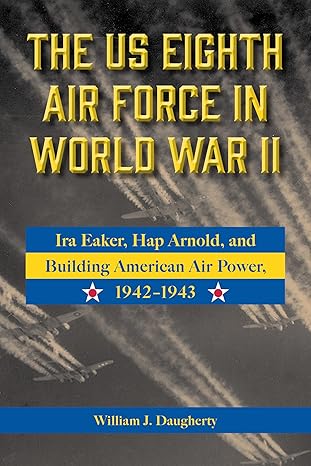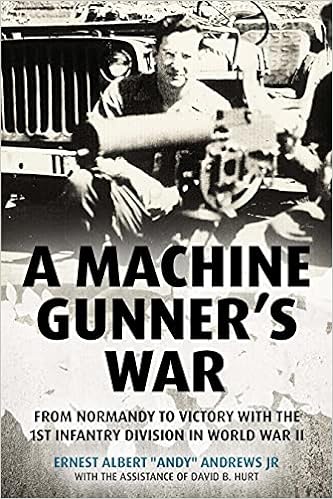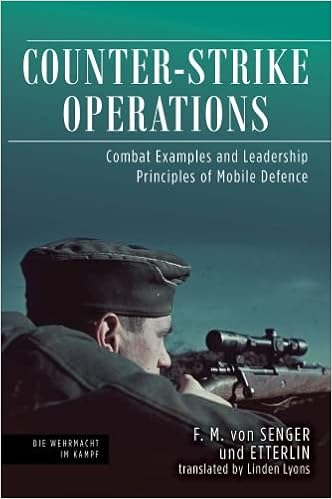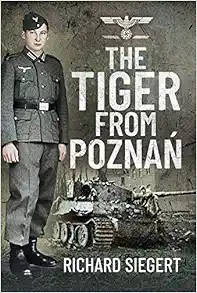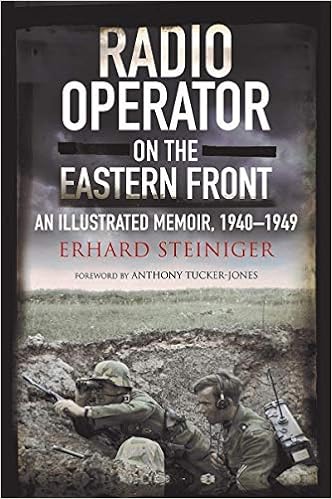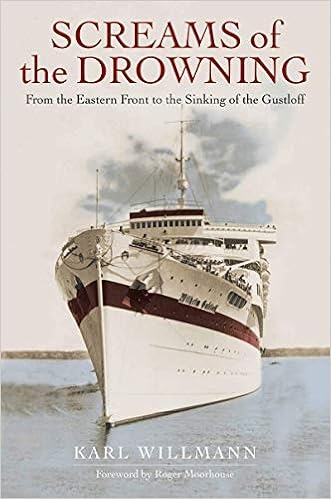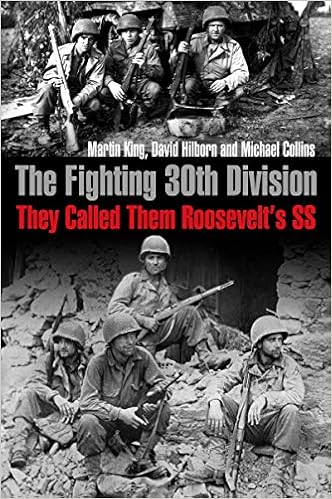Published Works on Second World War Orders of Battle for Land Forces
By Bill Wilson
Introduction
The armies of the Second World War were typically large organizations the formation of which was made possible by the total war efforts of the combatant nations. Holding continuous front lines in Europe, particularly in the Soviet Union, demanded the mobilization of hundreds of divisions in addition to other elements by both sides. Orders of battle indicate which units were present in given battles and campaigns, as well as providing information useful for determining the assignments and subordination of particular units within the national military structure.
The published works addressing orders of battle vary widely in their degree of comprehensiveness. Some have been published postwar as official works while others are commercial publications. Besides the published works, there are also primary sources available in the archives of the combatant nations. An evaluation of these primary sources is not in the scope of this article. This article will evaluate selected published order of battle works for Germany, the Soviet Union, Great Britain, France, and the United States.
Germany
Of all the military organizations of the Second World War, Germany's land forces are among the most popular. Given this level of interest, several works have been produced that document the German order of battle. Behind most of these works stands a massive, multi-year and multi-volume effort by German historian Dr. Georg Tessin (1899 - 1985). It is this work, Verbände und Truppen der deutschen Wehrmacht und Waffen-SS 1939 - 1945, that deserves the most interest, and those familiar with Tessin's work will recognize how heavily subsequent works on the German order of battle borrowed from it. Totaling twenty volumes, Tessin's work was perhaps best described by Dr. Leo Niehorster: "It is an incredible compendium of astounding effort. If you are interested in German units in World War II, this is the published source. All other efforts pale in comparison."
Details of the contents of the volumes can be found on Dr. Niehorster's site at http://niehorster.orbat.com/011_germany/tessin/tessin_00.html . Generally, Tessin's work is a numerically sequenced series of articles identifying all independent German ground forces combat organizations of the size of a battalion or larger. Each entry identifies the date of the unit's creation and provides a summary organizational history. Further information provides the unit's subordination as well as the corresponding support unit in the Replacement Army. Order of battle information is found under listings for field armies, typically listed by month and identifying divisions and brigades assigned to corps headquarters or directly subordinated to army headquarters.
Tessin's approach to the order of battle lists leaves gaps that readers should note. Because the lists are compiled at the field army echelon, units directly subordinated to army group echelon and higher are not identified. Thus, at points, it may appear a division or brigade has "gone missing" while in fact the unit was moving to another theater or directly subordinated to a very high echelon of the national military structure, such as the case of the LAH SS Panzergrenadier Division in August 1943. Entries for particular units can be consulted to identify where within the military structure the unit was to found for a particular month. For smaller units, some information on subordination is provided but it is not complete.
The entire work of Tessin is expensive to purchase, but if one is only interested in the order of battle lists, ownership of volumes one through four provides access to the monthly field army orders of battle as well as a fascinating summary of all of battalion or larger formations of the German ground forces.
Georg Tessin. Verbände und Truppen der deutschen Wehrmacht und Waffen-SS 1939 – 1945. Twenty volumes published from 1977 until 2002 by Biblio Verlag (Osnabrück) and Verlag E.S. Mittler & Sohn (Frankfurt / Main).
U.S.S.R.
The Soviet Union, unlike Germany, eventually published a pure (and official) order of battle that offers monthly views of the structure of the Soviet ground and air forces. The Boevoi sostav Sovetskoi armii (Combat composition of the Soviet Army) was published in five parts (one for each year of the Russo-German War) from 1963 until 1990. This document can be found on the internet. The main barrier to accessibility for English-language readers is that the document is written in Russian. However, the document defines abbreviations and is organized in a tabular format, making the translation less onerous than one might imagine given knowledge of the Cyrillic alphabet.
Each monthly entry of the BSSA is divided into four sections – the field army engaged in combat, those military formations and districts not engaged in combat, the Stavka strategic reserves, and the air defense forces (PVO). Each section is further broken down into sections for rifle, artillery, tank, aviation, and engineer troops. Monthly and organizational totals of types of units (rifle divisions etc.) are provided in the document.
The BSSA is particularly useful to identify the affiliation of units as they can be tracked from month to month, including the smaller combat support units like assault gun and antitank artillery regiments. For example, the document allows one to determine that the 152nd Tank Brigade was attached to the 2nd Shock Army on 1 January 1944 but had been returned to front reserves by 1 February. The BSSA also includes the units of Soviet allies such as the Polish and Czechoslovakian formations that were formed by the Soviet Army.
The BSSA, by its nature, gives many indications regarding the history of individual units, but it provides no information regarding the location or date of unit formation, or of units being titled as Guards formations. The new units or designations simply appear in a given monthly entry. In some cases, it is possible to roughly determine formation dates as new units appear in the Stavka reserves and then are subordinated to fronts or armies engaged in combat operations. The BSSA also does not provide information on the order of battle for NKVD forces that were not directly subordinated to Soviet Army commands for employment in combat. It also gives no indication of unit strength, a characteristic that strongly varied in the Soviet Army, particularly for the rifle divisions. Finally, because the BSSA’s monthly entries start with June 1941, it provides no information on the Soviet Union’s small wars with Japan, Finland, and Poland prior to the onset of the Russo-German War.
Soviet General Staff. Combat composition of the Soviet Army. Five parts published from 1963 until 1990 by the Vorishilov Academy of the General Staff and Voenizdat.
Great Britain
Another work that is not precisely an order of battle (although such information is provided in some cases) is Orders of Battle Second World War 1939-1945, by Lieut-Col. H. F. Joslen. First published in 1960, Joslen’s work lists the infantry, armoured, and airborne divisions and brigades of the British Army and British colonial forces (East and West Africa) during the war.
The work is divided into sections addressing the types and sizes of the units. Entries within sections are organized numerically, and each entry provides a sketch organization history, a list of commanders, subordinate units and the periods in which they were subordinated, higher headquarters, and an indication of when the unit was assigned to particular theaters. The final information provided is a list of major battles in which the unit took part.
For research involving particular British brigades or divisions, Joslen’s work is unequalled and likely to remain so. Joslen, unlike Tessin, does not track every regiment in the British Army down to its last battalion. As one reviews unit entries, the individual battalions are listed when they were subordinated to a brigade or a division. If battalions were captured or so reduced as to preclude further use in combat, they drop out of the reporting in Joslen’s work with no indication as to their fate. To track all units at battalion level, one would need a different work that followed each battalion individually. At times, British regiments are so well documented that answers to such questions can be quickly found, but in some cases resolution to questions might only be achieved by time spent at the national archives. Corps, field armies, and army groups are addressed only in passing in Orders of Battle.
Another aspect of the British order of battle is troublesome, but for which Joslen cannot be faulted because the scope of his work was primarily British forces. Those familiar with British military organization in various campaigns of the war know that a large part of the military strength available to British commanders was provided by the forces of other countries, such as Australia, India, and Canada. Thus, to identify the complete British and other national forces order of battle for particular battles or time periods, a researcher will quickly find that while Joslen’s work is very helpful, it identifies only a part of the military structure. The preparation of another volume addressing the forces of these other nations in Joslen’s style would be of significant use to students of British orders of battle.
Lieut-Col. H. F. Joslen. Orders of Battle Second World War 1939 – 1945. Published 1960 by Her Majesty’s Stationary Office and republished in 1990 by The London Stamp Exchange. Second edition totals 628 pages.
France
At eight volumes (not counting the volumes dedicated to situation maps) and thousands of pages, France’s official war history, Guerre 1939-1945 Les Grandes Unités Françaises, is a magnificent work combining order of battle information with succinct unit operations diaries. In this work, one may review the battle situation of a particular unit (typically corps or divisions) for a given day. GUF is unique in that it is simultaneously an official history of military operations and an order of battle.
GUF uses a facing page format in which the left page presents order of battle information and the right page provides the unit activity, citing official orders and at times presenting losses for defined periods of time. The order of battle information provides the higher headquarters, command post location, attached and detached units, as well as subordinate major units and their order of battle on any particular day. The diary information describes the unit’s situation, left and right boundaries, and operations.
In common with the other order of battle works described in this article, the coverage of units included in the work is generally very good. Front matter for each unit’s section in a volume includes information on the formation of the unit (except for those units in an active state on 1 September 1939) and identifies the commanders and principal staff officers. Once again, what readers should be aware of information not covered in GUF. The work focuses primarily on corps and divisions. Left out are the higher army and army group echelons – a significant missing element of information because of the many smaller support units generally attached to such headquarter units. Likewise, independent combat formations of a size smaller than a division are not tracked systematically in GUF. They appear here and there as attachments to divisions or corps, with occasional notes explaining that the smaller unit returned to direct control of a higher headquarters. GUF provides no information on Vichy forces save those present in French North Africa during Operation Torch. Frustrating as well is the lack of unit articles for forces in the French colonies. Thus, using GUF alone, it is impossible to assemble a complete French Army order of battle for a selected date.
Despite these deficiencies, GUF is an indispensable resource for understanding the structure of the French Army in the Second World War. Among the more unique contributions of GUF is Volume VI, which addresses the transformation of French Resistance bands into units of the French Forces of the Interior and later, into elements of the regular army.
French Army Historical Service. Guerre 1939-1945 Les Grandes Unités Françaises. Eight volumes and at least one volume dedicated to maps, published from 1967 until 1980 by the Imprimerie Nationale in Paris.
United States
Probably the definitive order of battle work for the ground forces of the U. S. Army is Shelby Stanton’s World War II Order of Battle. Stanton does not address army groups, but provides summary data for field armies and corps. From the echelons of division to independent battalions, this work provides varying amounts of information with the most detail reserved for the divisions.
Data provided for divisions includes typical early- and late-war organization, subordination to higher headquarters, and a combat narrative. Some unit attachments are noted for divisions in northwestern Europe during 1944-45 although this information is not provided for divisions in the Mediterranean Theater of Operations or for those in the Pacific Theater. Likewise higher headquarters data is not noted for some of the divisions that fought in the Tunisian Campaign.
Stanton provides brief histories for brigades and regiments and thumbnail organizational histories for battalions. Also found in Stanton’s work are tables summarizing personnel and equipment allocation for the divisions and a variety of combat arms and combat support battalions. Overall, this is a very thorough and useful work, although attachment data is not provided for groups and battalions. Some of the attachments can be seen in the data provided for divisions, but this view is not complete and does not address those units subordinated directly to field army and corps headquarters. Orders of battle for corps and armies are not provided and must be manually extracted from information in the work.
The U.S. ground forces order of battle would not be complete without considering the U. S. Marine Corps. An extremely thorough and informative work is Gordon Rottman’s U. S. Marine Corps World War II Order of Battle. Here, one finds a wealth of information on both the ground and air units that made up the Marine Corps, from the echelon of Marine Amphibious Corps down to the level of independent companies.
Rottman’s work includes unit organizational data, historical narratives, descriptions of operations identifying participating units, maps indicating the location of Marine aviation units, descriptions of weapons, statistical data for the Marine Corps in the Second World War, and brief organizational descriptions of both the U. S. Army in the Pacific Theater and the Japanese forces.
Missing from Rottman’s work are tables of unit subordination, making it difficult to determine a unit’s higher headquarters at every point of the war. It is difficult to otherwise fault this work as it is a storehouse of fascinating information such as a list of the elements of U. S. Marine Forces in North China in December 1941, or operations on Peleliu in April 1947 to eliminate an aggressive band of Japanese holdouts.
Shelby Stanton. World War II Order of Battle. Published 1984 by Presidio Press (Novato) and republished in 1991 by Galahad Books. Second edition totals 620 pages.
Gordon Rottman. U. S. Marine Corps World War II Order of Battle. Published 2002 by Greenwood Press (Westport). 597 pages.
A Brief Comparison of the Works
|
Work
Tessin BSSA Joslen GUF Stanton Rottman |
Language Addressed
German Russian English French English English |
Echelons
Battalion and higher Battalion and higher Brigade and division Division and corps Battalion and higher Company and higher |
Nature of OOB
Monthly by field army Monthly for entire force By theater of operations Daily Manual compilation By operation |
Data for non-div units
Partial Complete Occasional Partial Partial Partial |
© 2026 Bill Wilson
Written by Bill Wilson.
About the author:
Bill Wilson is a military history enthusiast whose interest is the organization of the military forces of the Second World War. He served in the U.S. Army in Germany during the Cold War and currently resides in Europe.
* Views expressed by contributors are their own and do not necessarily represent those of MilitaryHistoryOnline.com.

